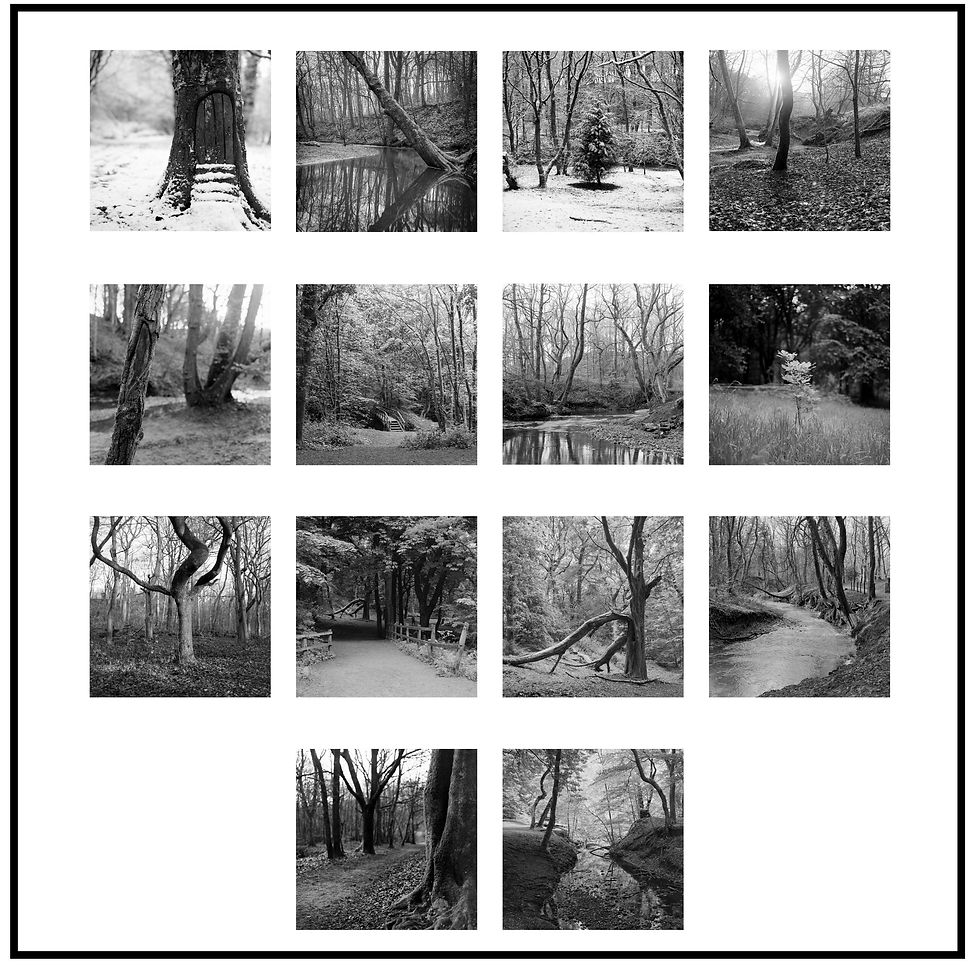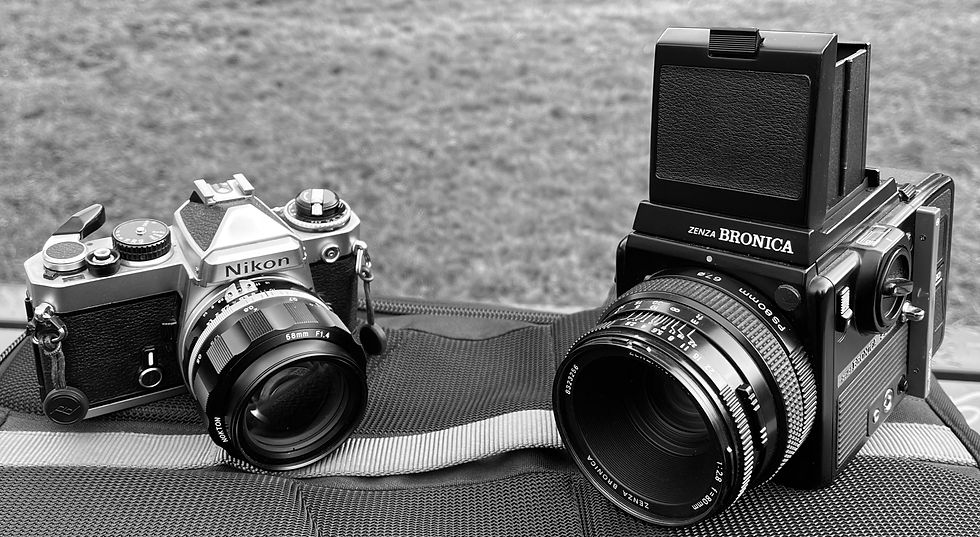As a photographer, being invited to exhibit your work in an exhibition is a great honour, and that is exactly what happened to me when I was invited to showcase my photographs taken in Borsdane Woods as part of the inaugural Borsdane Woods Photographic Exhibition in Hindley, Wigan. I was one of only two local photographers chosen to display my work, which made it even more special. In this post, I want to share my experience of exhibiting my photographs, the camera systems I used to capture them, and the intent behind my body of work.
My body of work consists of 14 photographs taken on black and white film in Borsdane Wood LNR, and it focuses on the beauty found in both the details and wider shots of the trees. In the Collection, I aimed to showcase the intricate details and textures found in the bark and leaves of trees, as well as the shapes and forms of the branches and canopies. I explored the interplay between light and shadow in these images, creating a range of tonalities that bring out the depth and dimensionality of the trees. Each photograph was carefully chosen to complement and contrast with one another, creating a cohesive narrative that showcased the unique beauty of these trees. They are presented in the rough order one would encounter them when walking North, from the Southern entrance.

The images in my exhibition, in the display order.
I used two camera systems to capture the images in this collection. My favourite 35mm film camera is my Nikon FE, especially when coupled with my Voigtländer 58mm f1.4 Nokton SLII lens. This camera uses 135 (35mm) format film, which is still readily available these days both on the high street (Boots still sells it, as do most high street camera shops) and it’s available online. However, I mostly roll my own canisters of film, as the cost of film has increased a lot in recent years. The Nikon FE was introduced in 1978 and discontinued in 1983. The manufacturers QC stamp inside the film back door tells us that my copy was manufactured in October 1981.
The other camera system I used, and the one used to create most of the photographs in this Collection is my Zenza Bronica SQ-Ai medium format film camera. This is my favourite camera of all of my film and digital cameras. Coupled with its 80mm f2.8 lens, it gives the equivalent full-frame field of view of a 50mm lens, It uses 120 format film, which gives 12 photographs to a roll of film. The Zenza Bronica SQ Ai was introduced in December 1990 and production discontinued in December 2003.
Using film cameras, especially medium format ones, can be challenging and rewarding at the same time. You need to be mindful of your settings, film speed, and lighting conditions to achieve the desired results. The process of loading and unloading film can also be time-consuming, but it's a small price to pay I feel for the quality and character that film.

Nikon FE, with Voigtländer 58mm f1.4 Nokton SLII on the left and the Zenza Bronica SQ Ai with 80mm f2.8 on the right
The use of black and white film helped me create a timeless and classic aesthetic that added to the sense of tranquillity and natural beauty found in these images. I wanted to highlight the fact that trees have been around for thousands of years and will continue to be around long after we're gone. Black and white film also allowed me to experiment with different contrasts and tonalities, bringing out the detail and character of each tree. To add to the artistic value of my photographs, each one was accompanied by a carefully composed Haiku, inspired by the trees and woods themselves. Through this body of work, I hoped to encourage viewers to appreciate the beauty and complexity of trees, and to connect with nature in a meaningful way.
Why shoot on black and white film? Well many regular visitors to this site will know that whilst black and white film is my preference, there isn't necessarily a definitive answer to whether shooting on black and white film is better than shooting digitally. It ultimately comes down to personal preference and the specific goals and needs of the photographer. However, there are some potential benefits to shooting on black and white film that some photographers find appealing.
Firstly, shooting on film can offer a unique look and feel that can be difficult to replicate digitally. Black and white film, in particular, can produce a distinct tonal range and contrast that many photographers find visually striking. Additionally, shooting on film can often result in a more deliberate and considered approach to photography, as the limited number of exposures per roll and the cost of film and processing can encourage photographers to take their time and think more critically about each shot.
I find that shooting on film gives me the entire creative process in a controlled manner. Shooting digitally is excellent if you aren’t sure what you’ll encounter as digital RAW files are designed with post-processing in mind (that’s why many come out as lacking contrast and are flat, with muted colours). Shooting film commits that photograph or roll of film to certain pre-determined parameters. I find this structure to be helpful, whilst still allowing entire creative freedom.
Each of the prints, with accompanying Haikus beneath.
Through this Collection, I hope to encourage viewers to appreciate the beauty and complexity of trees, and to connect with nature in a meaningful way. The exhibition will continue to be open each day (apart from Sundays) from the 8th April 2023 through to the 22nd April 2023, and it is held at St John's Methodist Church, Hindley, Wigan.
I really enjoyed speaking to visitors today, and hearing their perspectives and experiences of shooting film over the years, and I'll be popping in as the exhibition continues and look forward to seeing more folk there!







































Comments